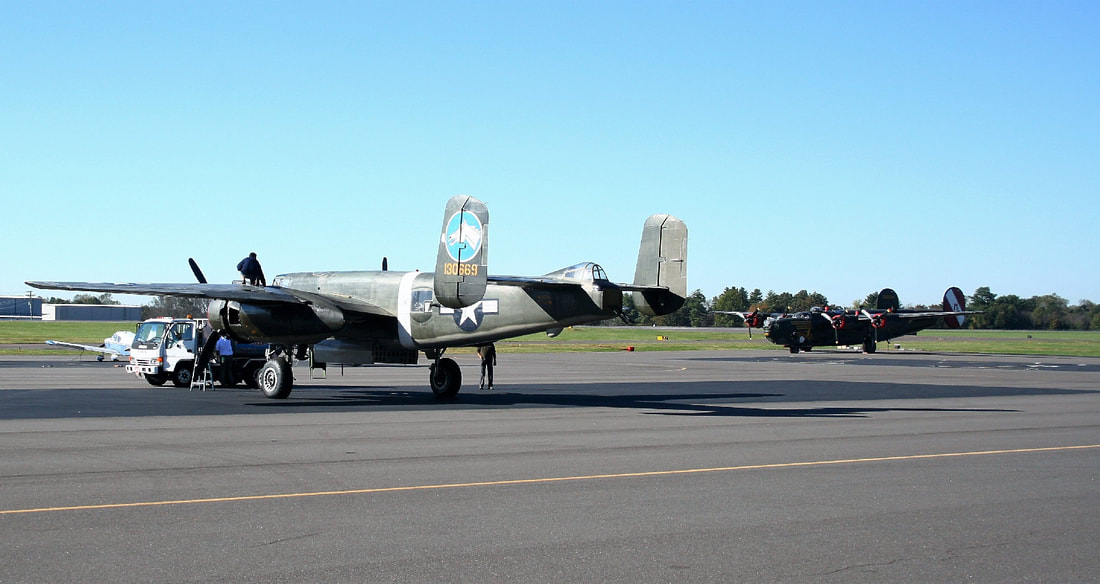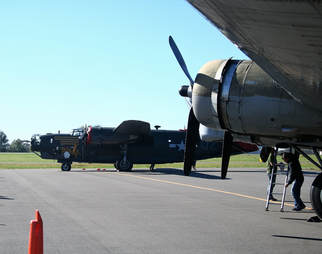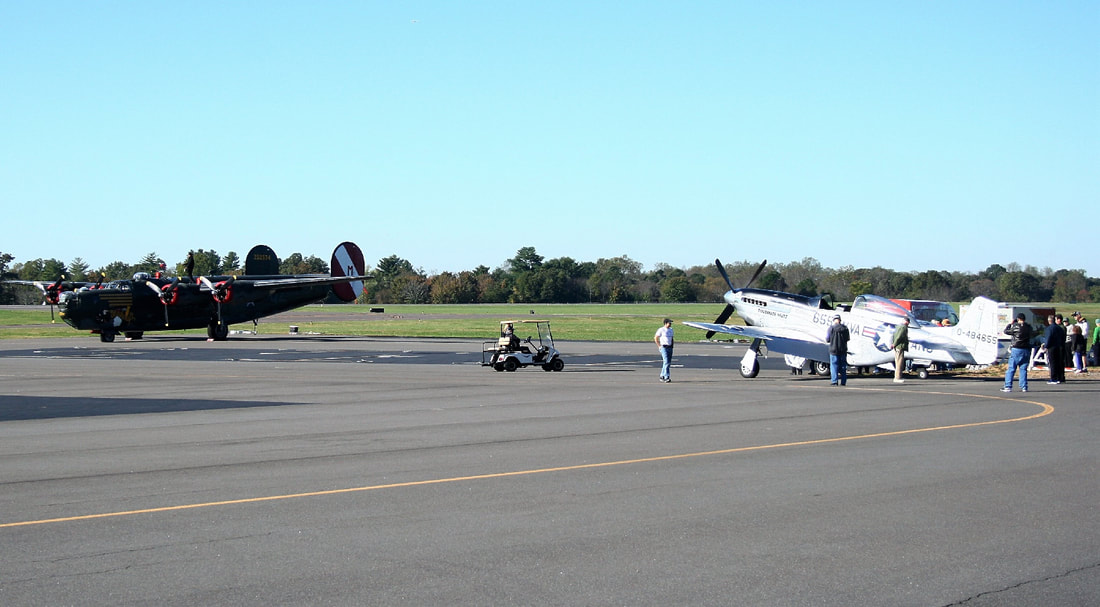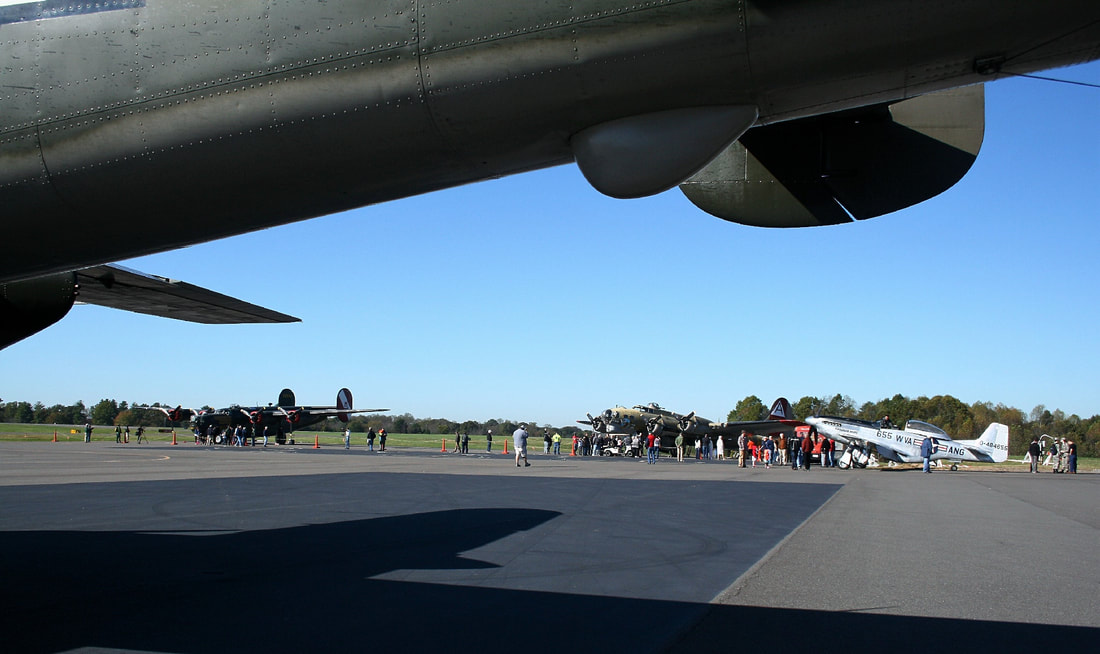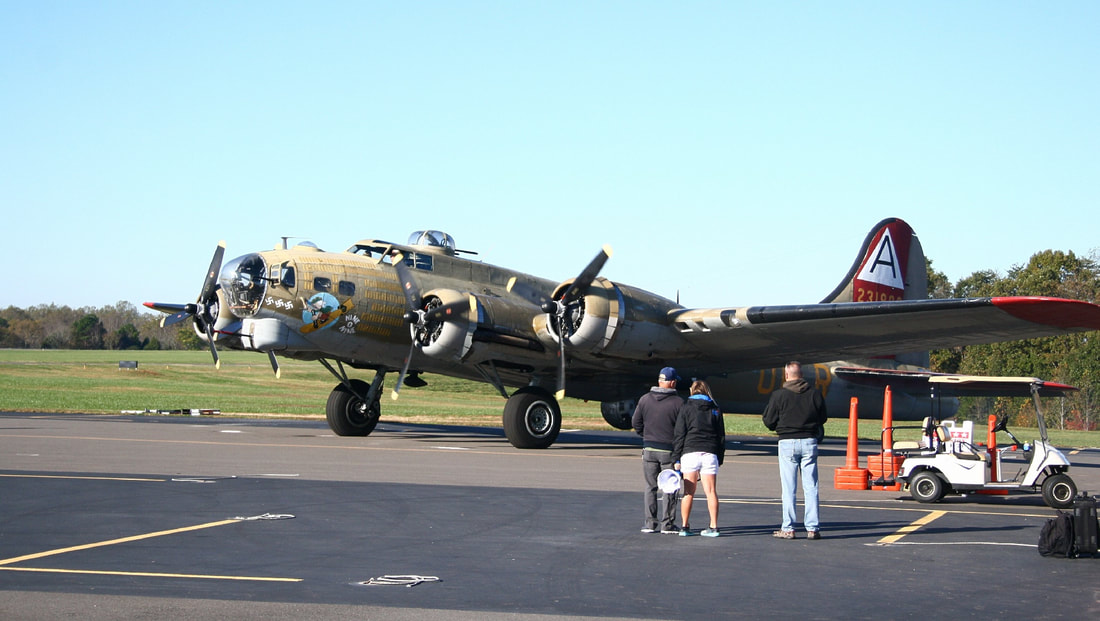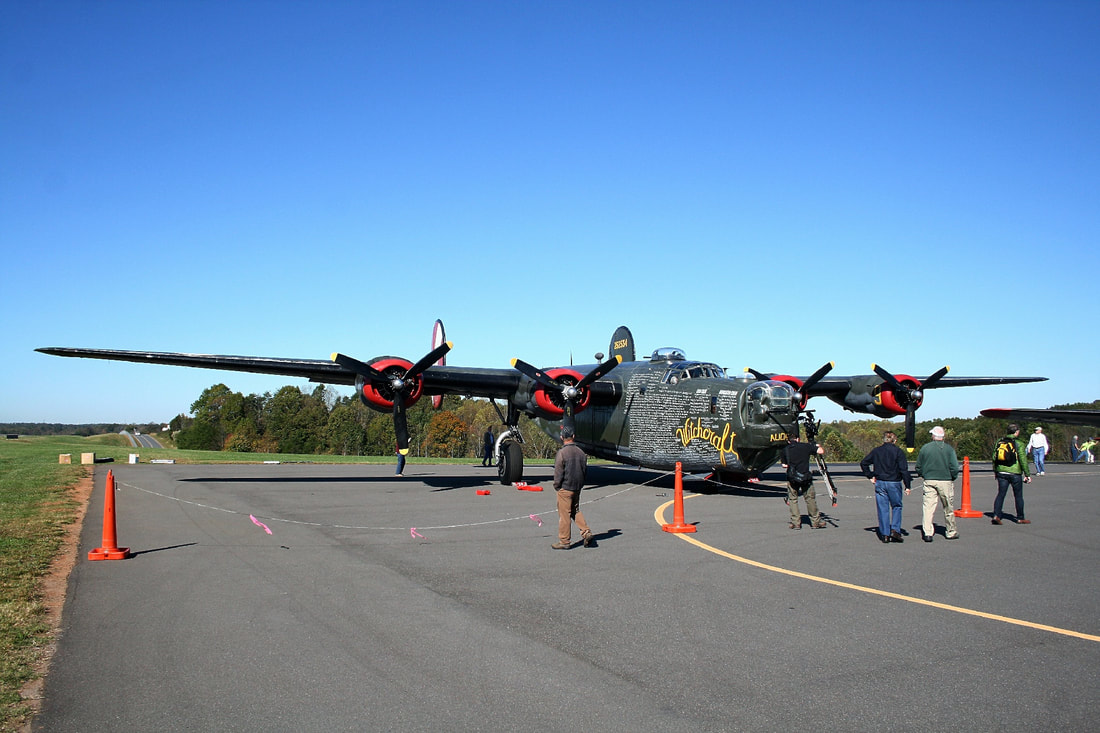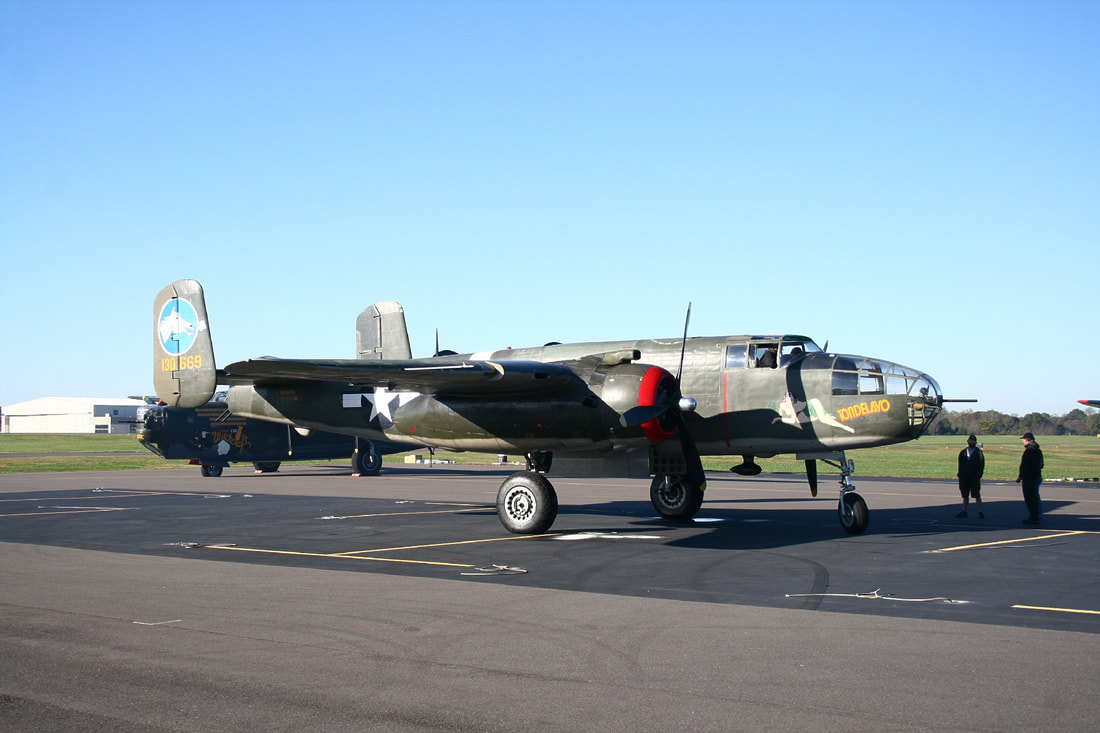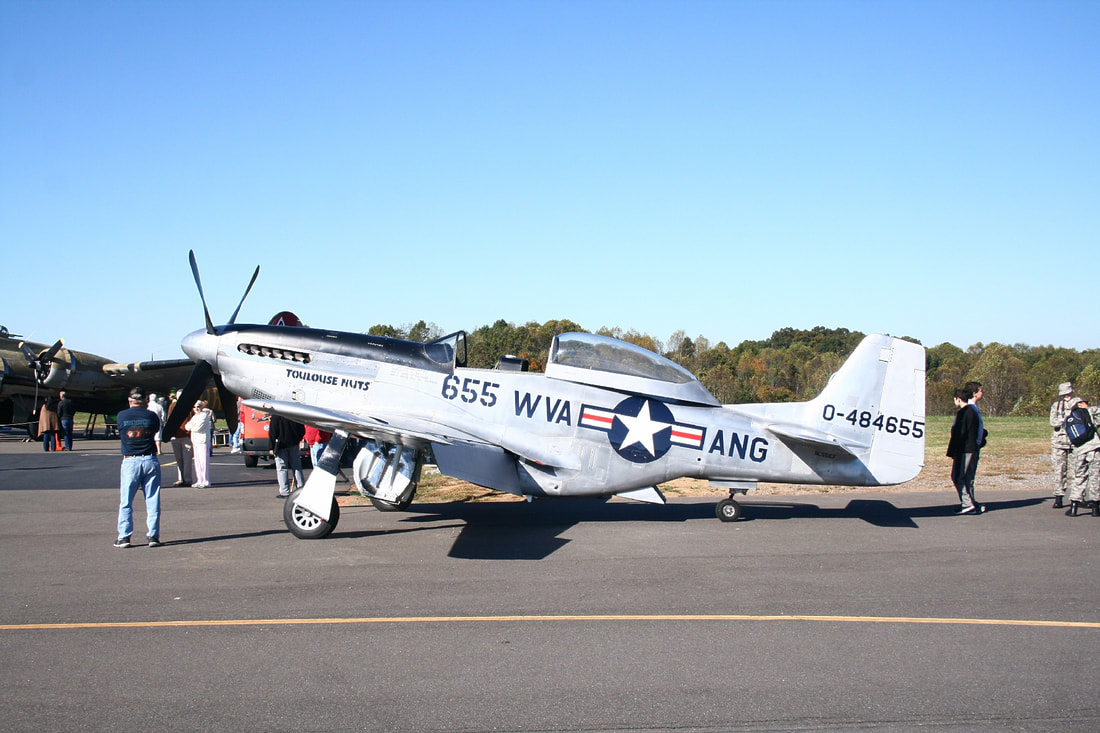World War ii Warbirds-Statesville, nc 2017
More than seventy years ago, the skies of Europe and over the Pacific were filled with aircraft engaging in one theater of a great global conflict. They were both the hunter and the hunted. The generation that directly engaged in World War II is a rank that is now thinly veiled by the passage of time—the remaining men that flew these planes are but a few. History has recorded their heroics and the legendary exploits of their experiences. But those who survive—as well as their brothers since passed on—downplayed any ceremony of warfare. It was not about glory or medals but rather duty and obligation to country. In the aftermath, a somberness embossed their collective conscience for decades forever etching in memory a terrible struggle and the grim realities of war. There is no cinematic fanfare—only the battles for survival and the recollection of finally coming home—and of those who did not.
A symbolic survivor of World War II is the aircraft themselves although comparatively speaking, their numbers are also thin. Mass produced by the thousands, American planes rolled off the assembly lines in a colossal output of industrial might and resolve. During the war, many were either shipped to allied nations or destroyed in combat. At its end, the majority were scrapped with only a small percentage remaining in active service until supplanted completely by the jet. Graveyards of aircraft were established until a final reckoning determined their individual fates. The number of aircraft saved for preservation was ultimately small---the actual count of those restored to operation is even fewer.
When we see these planes today what are the thoughts? Is it of the appearance, the flight through time and space, or perhaps, something deeply poignant? It probably depends on who each one of us is. The most profound is a surviving flyer himself. A direct correlation to a father or family once removed such as a grandfather would follow in succession. The subsequent number of generations three quarters of a century later may require an extended reach up the branch of the family tree to mark a connection. Conversely, there is unquestionably the non-emotional admiration of the planes from individuals solely on the premise of simply appreciating a fascinating machine. But therein lay a great paradox and the starkest of ironies. These creations by man--awe inspiring yet lethal---were necessary to defeat the aggressive destruction by other men.
About the Event
This show in Statesville was a stop on the "Wings of Freedom" tours that travels the country showcasing these aircraft and promoting history. Operated by the Collings Foundation, this organization maintains an impressive collection of aircraft from all eras and specializes in restoring many to operation. In addition, it also offers flights and training in a select number of these planes. It is a non-profit entity subsidized by donations, flight tours, and admissions to its events.
All photographs on this page by Dan Robie 2017
b-17 Flying Fortress
"
From the Collings Foundation: "The most widely recognized and revered aircraft type of World War II, the B-17 Flying Fortress, takes to the skies again. The B-17G (Serial # 44-83575) has been returned to its wartime configuration under the auspices of the nonprofit Collings Foundation of Stow, MA and given the name “Nine-O-Nine”.
The Collings Flying Fortress was built at Long Beach, CA by the Douglas Aircraft Company and accepted on April 7, 1945. Although she was too late for combat, #44-83575 did serve as part of the Air/Sea 1st Rescue Squadron and later in the Military Air Transport Service.
In April 1952, #44-83575 was instrumented and subjected to the effects of three different nuclear explosions. After a thirteen-year “cool down” period, #44-83575 was sold as part of an 800-ton scrap pile and Aircraft Specialties Company began the restoration of the aircraft.
Damaged skin was fabricated and replaced on site; engines and props were stripped, cleaned, repaired, and tested; four thousand feet of new control cable was installed; all electrical wiring and instrumentation was replaced. As she neared completion, the jeers and laughter of those who said she would never fly again faded as the sounds of four 1200 HP Wright-Cyclone engines echoed across the desert and “Yucca Lady” rose as the phoenix and climbed into the sky.
For twenty years, without a major problem or incident, #44-83575 served as a fire bomber dropping water and borate on forest fires. She was sold in January 1986 to the Collings Foundation. Restored back to her original wartime configuration by Tom Reilly Vintage Aircraft, she represented one of the finest B-17 restorations and won several awards.
In August 1987, while performing at an airshow in western Pennsylvania, “Nine-O-Nine” was caught by a severe crosswind moments after touchdown. The right wing lifted in the air, finally coming down too far down the runway. Despite the efforts of her crew, she rolled off the end of the runway, crashed through a chain link fence, sheared off a power pole and roared down a 100-foot ravine to a thundering stop. The landing gear sheared off, the chin turret was smashed and pushed into the nose; the Plexiglas nose was shattered; bomb bay doors, fuselage, fuselage, ball turret, wing and nacelles all took a tremendous beating. Engines and propellers were also torn form their mounts. Fortunately, there were no fatalities to the crew or riders although there were injuries.
For a second time, this B-17 “rose from the ashes”. With nacelles from the famed B-17 “Shoo Shoo Shoo Baby”, thousands of volunteer hours, support from the folks of Beaver Falls, PA, and donations from individuals and corporations, she was made whole again to carry on the proud and rugged heritage of the B-17.
Since the crash at Beaver Falls, the B-17 has succeeded in visiting over 1200 tour stops. This means that millions, who would otherwise never seen the Flying Fortress, have been able to experience first hand the plane that helped change the history of the world fifty years ago.
The Collings Foundation B-17 was named “Nine-O-Nine” in honor of a 91st Bomb Group, 323rd Squadron plane of the same name which completed 140 missions without an abort or loss of a crewman.
The original “Nine-O-Nine” was assigned to combat on February 25, 1944. By April 1945, she had made eighteen trips to Berlin, dropped 562,000 pounds of bombs, and flown 1,129 hours. She had twenty-one engine changes, four wing panel changes, fifteen main gas tank changes, and 18 Tokyo tank changes (long-range fuel tanks). She also suffered from considerable flak damage.
After European hostilities ceased, “Nine-O-Nine”, with its six-hundred patched holes, flew back to the United States. While the rigors of war never stopped the historic “Nine-O-Nine”, she succumbed at last to the scrappers guillotine, along with thousands of other proud aircraft."
From the Collings Foundation: "The most widely recognized and revered aircraft type of World War II, the B-17 Flying Fortress, takes to the skies again. The B-17G (Serial # 44-83575) has been returned to its wartime configuration under the auspices of the nonprofit Collings Foundation of Stow, MA and given the name “Nine-O-Nine”.
The Collings Flying Fortress was built at Long Beach, CA by the Douglas Aircraft Company and accepted on April 7, 1945. Although she was too late for combat, #44-83575 did serve as part of the Air/Sea 1st Rescue Squadron and later in the Military Air Transport Service.
In April 1952, #44-83575 was instrumented and subjected to the effects of three different nuclear explosions. After a thirteen-year “cool down” period, #44-83575 was sold as part of an 800-ton scrap pile and Aircraft Specialties Company began the restoration of the aircraft.
Damaged skin was fabricated and replaced on site; engines and props were stripped, cleaned, repaired, and tested; four thousand feet of new control cable was installed; all electrical wiring and instrumentation was replaced. As she neared completion, the jeers and laughter of those who said she would never fly again faded as the sounds of four 1200 HP Wright-Cyclone engines echoed across the desert and “Yucca Lady” rose as the phoenix and climbed into the sky.
For twenty years, without a major problem or incident, #44-83575 served as a fire bomber dropping water and borate on forest fires. She was sold in January 1986 to the Collings Foundation. Restored back to her original wartime configuration by Tom Reilly Vintage Aircraft, she represented one of the finest B-17 restorations and won several awards.
In August 1987, while performing at an airshow in western Pennsylvania, “Nine-O-Nine” was caught by a severe crosswind moments after touchdown. The right wing lifted in the air, finally coming down too far down the runway. Despite the efforts of her crew, she rolled off the end of the runway, crashed through a chain link fence, sheared off a power pole and roared down a 100-foot ravine to a thundering stop. The landing gear sheared off, the chin turret was smashed and pushed into the nose; the Plexiglas nose was shattered; bomb bay doors, fuselage, fuselage, ball turret, wing and nacelles all took a tremendous beating. Engines and propellers were also torn form their mounts. Fortunately, there were no fatalities to the crew or riders although there were injuries.
For a second time, this B-17 “rose from the ashes”. With nacelles from the famed B-17 “Shoo Shoo Shoo Baby”, thousands of volunteer hours, support from the folks of Beaver Falls, PA, and donations from individuals and corporations, she was made whole again to carry on the proud and rugged heritage of the B-17.
Since the crash at Beaver Falls, the B-17 has succeeded in visiting over 1200 tour stops. This means that millions, who would otherwise never seen the Flying Fortress, have been able to experience first hand the plane that helped change the history of the world fifty years ago.
The Collings Foundation B-17 was named “Nine-O-Nine” in honor of a 91st Bomb Group, 323rd Squadron plane of the same name which completed 140 missions without an abort or loss of a crewman.
The original “Nine-O-Nine” was assigned to combat on February 25, 1944. By April 1945, she had made eighteen trips to Berlin, dropped 562,000 pounds of bombs, and flown 1,129 hours. She had twenty-one engine changes, four wing panel changes, fifteen main gas tank changes, and 18 Tokyo tank changes (long-range fuel tanks). She also suffered from considerable flak damage.
After European hostilities ceased, “Nine-O-Nine”, with its six-hundred patched holes, flew back to the United States. While the rigors of war never stopped the historic “Nine-O-Nine”, she succumbed at last to the scrappers guillotine, along with thousands of other proud aircraft."
b-24 Liberator
From the Collings Foundation: "The world’s only fully restored and flying consolidated B-24J Liberator is back in the skies after an absence of twenty years. The B-24 fought for our freedom in the skies of Europe and the Pacific through the use of strategic bombing during the Second World War. In order to help preserve this history and honor the veterans who participated in the war, B-24 serial number 44-44052 has been restored to mint condition under the auspices of the Collings Foundation of Stow, MA.
Over fifty years ago, in August 1944, the Collings Liberator was built at the Consolidated Aircraft Company’s Fort Worth, Texas plant. Shortly afterward, the aircraft was delivered to the US Army Air Force and in October of 1944, it was transferred to the Royal Air Force. Under the British flag, the B-24 saw combat in the Pacific Theater in operations ranging from anti-shipping to bombing and re-supply of resistance force operations.
At war’s end, the aircraft was abandoned by the RAF in a bomber graveyard in Khanpur, India; with the assumption that it would not fly again. However, in 1948, the Indian Air Force succeeded in restoring 36 B-24’s, including 44-44052, to operational status. These aircraft were utilized until 1968.
For the next 13 years, the aircraft sat abandoned in India until British aircraft collector, Doug Arnold, obtained it in 1981. The aircraft was disassembled and transported back to England in a Heavy Lift cargo plane. Once in England, the aircraft was advertised for sale in “as is” condition and in 1984, Dr. Robert F. Collings purchased it. After a sea voyage of three weeks, the B-24 arrived in Boston and was brought to Stow, MA in four truckloads.
Collings said that the Foundation intended to restore the plane for static display only, but he was persuaded to restore it to flying status by local B-24 crewmen. “This made it about five times greater a project,” Collings said. “We were convinced by the argument that only about three thousand people a year would see a static display, but three million might see it on a nationwide tour"
b-25 Mitchell
|
Wingspan 67 feet, 7 inches
|
From the Collings Foundation: "The B-25 was never conceived to fly off an aircraft carrier but it adapted.............It is an unmistakable sound… two Wright R-2600 engines echoing through the sky as one of America’s most famous medium bombers, the B-25 Mitchell, soars through the skies over 50 years after its service life. Made most famous for the Doolittle Raid on Japan, the first American attack made on the Japanese mainland after the attack on Pearl Harbor. This famous raid saw sixteen B-25s take off from the aircraft carrier, the USS Hornet on a daring mission that brought morale back to America in a time of war. The B-25 was never conceived to fly off of an aircraft carrier, but it adapted… that’s what the B-25 was known for, adaptability under any combat circumstance
.
Employed as a bomber in every theater of operations, and even as a ground attack aircraft and low-level bomber, the B-25 was a reliable aircraft with a proven record that was hard to beat. Even after WWII, the B-25 saw considerable use in the civilian sector as a transport aircraft and as a fire-bomber over America’s forested regions.
Today the B-25 “Tondelayo” is operated by Collings Foundation volunteers. It is available for viewing and flight experiences during our national Wings of Freedom tour and at specific events throughout the year"
.
Employed as a bomber in every theater of operations, and even as a ground attack aircraft and low-level bomber, the B-25 was a reliable aircraft with a proven record that was hard to beat. Even after WWII, the B-25 saw considerable use in the civilian sector as a transport aircraft and as a fire-bomber over America’s forested regions.
Today the B-25 “Tondelayo” is operated by Collings Foundation volunteers. It is available for viewing and flight experiences during our national Wings of Freedom tour and at specific events throughout the year"
p-51 Mustang
From the Collings Foundation: "Fast, well made with the ability to fly long distances, the North American P-51 Mustang became one of the world’s most successful and recognizable aircraft. The bombing missions over the skies of Europe were taking very heavy losses from Luftwaffe fighters. The allied aircrews desperately needed an escort fighter that could stay with the bombers deep into enemy territory and back to base on every mission. The P-51 Mustang was the immediate choice. Within a very short period, the P-51 was affectionately nicknamed by the bomber crews as their “Little Friend.” The P-51B and C were the first fighters to escort the allied bombers all the way to Germany and back. The P-51 Mustang and the pilots who flew them saved countless lives in the skies and on the ground, and perhaps turned the tide of the war.
After WWII, the USAAF consolidated much of its fighter aircraft. Most piston powered fighters served substantially reduced roles as more advanced jet powered aircraft emerged. The Mustang still proved useful serving in the Korean War and state-side in the Air Force Reserves and National Air Guard. TF-51D Mustangs (two-seat trainers) were used to train fighter pilots until the jet-trainers such as the T-33 Shooting Star were fully utilized. The Foundation’s TF-51D is one of three original TF-51Ds remaining in the world. This fighter will be painted in its original markings as a West Virginia Air Guard, 167th Fighter Squadron P-51 called “Toulouse Nuts.”
2016 Oshkosh AirVenture Grand Champion, “Toulouse Nuts” is one of the world’s finest TF-51D restorations to date. Tens of thousands of hours went into rebuilding this fighter to “brand new” condition. Every surface, rivet, wire and instrument is perfect. The 1450 hp Merlin engine looks like it just came off the factory floor. Think of this fighter as a flying sculpture you can experience! We offer Flight Training in “Toulouse Nuts.”
After WWII, the USAAF consolidated much of its fighter aircraft. Most piston powered fighters served substantially reduced roles as more advanced jet powered aircraft emerged. The Mustang still proved useful serving in the Korean War and state-side in the Air Force Reserves and National Air Guard. TF-51D Mustangs (two-seat trainers) were used to train fighter pilots until the jet-trainers such as the T-33 Shooting Star were fully utilized. The Foundation’s TF-51D is one of three original TF-51Ds remaining in the world. This fighter will be painted in its original markings as a West Virginia Air Guard, 167th Fighter Squadron P-51 called “Toulouse Nuts.”
2016 Oshkosh AirVenture Grand Champion, “Toulouse Nuts” is one of the world’s finest TF-51D restorations to date. Tens of thousands of hours went into rebuilding this fighter to “brand new” condition. Every surface, rivet, wire and instrument is perfect. The 1450 hp Merlin engine looks like it just came off the factory floor. Think of this fighter as a flying sculpture you can experience! We offer Flight Training in “Toulouse Nuts.”
Afterword
This event spanned the course of three days beginning on Wednesday, October 25 and concluded on Friday, October 27. Attendance was respectable given that it was on weekdays; inasmuch, the lack of at least one weekend day likely prevented the turnout from being greater. I attended on Friday and there were approximately 150 on hand representing all age groups. What I attempted to notice was the number of veterans present that could be readily identified. Sadly, I did not see any World War II vets---not that none may have been there--but Korean and Vietnam War vets numbered a few as well as some active duty personnel. It takes a realization to reconsider the ages of the veterans of the 20th century wars--the youngest Vietnam vets are now in their sixties, Korean War vets are octogenarians, and the surviving World War II vets have eclipsed their 90th birthdays.
Three of the four planes took flight at the show as several of the attendees were taken on tours that remained in the air for a half hour. The only plane that remained stationary was the B-24 Liberator. Exploratory tours were available for the B-17 and B-24 but I did not partake in these. Although I was interested in seeing the inside of the planes, I did not have a working flash and could not take photos of which would have been preferable.
This was a difficult event to photograph. Due to the location at the Statesville airport and low morning (and seasonal) sun, glare and backlighting were obstacles. There were also restrictions preventing access to angles with more favorable lighting conditions. Added to this, it is virtually impossible to take unobstructed photos whether it be due to other equipment associated with the event and those of an active airport. Of course, people filled the viewfinder as well but they are admiring the plans just as I did. Considering all of the elements and factors involved, I was satisfied with the results captured here.
Credits
All specification and historical data about the aircraft is directly from the Collings Foundation. For a complete listing of its collection, tours, and details about the organization, here is a link to its web site.
